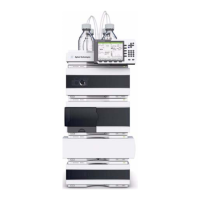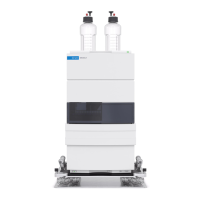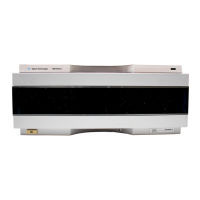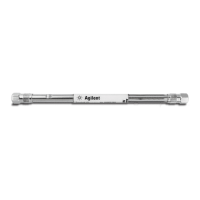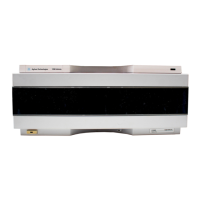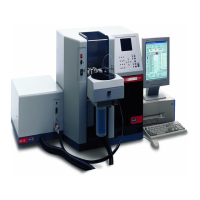1100 Series DAD and MWD User Manual 13
Site Requirements and Specifications 1
Bench Space
The detector dimensions and weight (see Table 1) allows you to place the
detector on almost any desk or laboratory bench. It needs an additional 2.5 cm
(1.0 inches) of space on either side and approximately 8 cm (3.1 inches) in the
rear for air circulation and electric connections.
If the bench should carry a Agilent 1100 Series system, make sure that the
bench is designed to bear the weight of all modules.
The detector should be operated in a horizontal position.
Environment
Your detector will work within the specifications at ambient temperatures and
relative humidity described in Table 1.
ASTM drift tests require a temperature change below 2
°C/hour (3.6 °F/hour)
over one hour period. Our published drift specification (refer also to
“Performance Specifications” on page 16) is based on these conditions. Larger
ambient temperature changes will result in larger drift.
Better drift performance depends on better control of the temperature
fluctuations. To realize the highest performance, minimize the frequency and
the amplitude of the temperature changes to below 1
°C/hour (1.8 °F/hour).
Turbulences around one minute or less can be ignored.
WARNING
Never operate your instrumentation from a power outlet that has no ground
connection. Never use a power cord other than the Agilent Technologies power cord
designed for your region.
WARNING
Never use cables other than the ones supplied by Agilent Technologies to ensure
proper functionality and compliance with safety or EMC regulations.
CAUTION
Do not store, ship or use your detector under conditions where temperature
fluctuations could cause condensation within the detector. Condensation will damage
the system electronics. If your detector was shipped in cold weather, leave it in its box
and allow it to warm up slowly to room temperature to avoid condensation.
